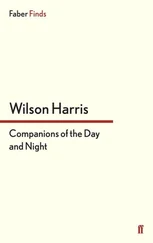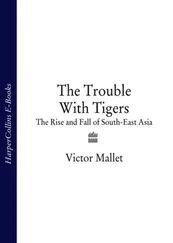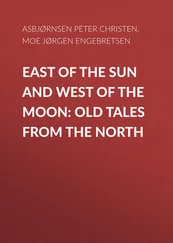According to the Chronicle of Edessa , in the aftermath of the flood, districts of the city were redesigned and rebuilt, and a five-year remission of taxes was granted. Mention is made of a neighborhood of Edessa, presumably on the citadel mount, which was the location of the houses of individuals involved in the administration of the kingdom (1.9–10; for maps of Edessa, see Burkitt 1913; Drijvers 1977: 865); these individuals included surveyors and trained architects who played an advisory role to the king during the emergency caused by the flood (1.10; 2.12–13). Two new royal palaces were planned and built, and a neighborhood was erected to contain new dwellings for nobles close to the king (3.3–4; the summer palace of Abgar was later described by the pilgrim Egeria, in 384 CE, in Peregrinatio Egeriae 19.6 and 19.14–18). The close relation between King Abgar and his nobles is emphasized by the text and may recall Hellenistic court life, according to which the king’s extended family dwelt with a number of high-ranking philoi , in addition to people staying at court for a limited amount of time, such as intellectuals, politicians, or exiles, and a number of specialist assistants catering to the administrative needs of the kingdom and of the court such as clerks, scribes, and physicians (Herman 1997; Savalli-Lestrade 1998; Erskine et al. 2017); at the same time, the emphasis on kinship that emerges from the text as well as from the Syriac epigraphic material should be understood in relation to the tribal structures that were part of Edessene society (Sommer 2018: 252–258).
An account of the same flood can be found in another historiographical source, the Chronicle of Zuqnin , also known as Chronicle of Ps.-Dionysius of Tell Mahre , under the year 2232 of Abraham (ed. Chabot 1927a; see Chabot 1927b; Witakowski 1996; Harrak 1999 and 2017 for English translation). This is a universal chronicle, beginning with the creation of the world and covering the period until 775 CE, the time of its composition, and is a very rich source for the study of the Roman Near East. For instance, it describes an ancient pagan, and possibly orgiastic, cult in Edessa (Chabot 1927a: 256–257 and 259; English translation in Trombley and Watt 2000: 28 and 32 with notes; Harrak 2017). Its sources include Eusebius of Caesarea and Socrates of Constantinople, but also various Syriac texts otherwise lost, including the Ecclesiastical History by John of Ephesus (sixth century). Other historiographical sources that have been used in the study of the history of the kingdom of Edessa and the Roman Near East are the Chronography by Elia of Nisibis (eleventh century), which covers the period 25–1018 CE and brings together ecclesiastical and political events (ed. Brooks and Chabot 1910, with Latin translation; French translation in Delaporte 1910), and the monumental world chronicle by Michael the Syrian (twelfth century), which covers the period from the origin of the world to 1195 CE and relies on a range of historiographical and documentary sources that are now lost (Syriac text and French translation are in Chabot 1899).
The corpus of Syriac historiographical writing, however, is extensive and is yet to be exploited in full. Given that several Syriac sources cover the Hellenistic and Roman period, researchers in this field will find it helpful to consult the work in Debié 2015, which surveys the material and includes a comprehensive repertoire of texts, and is accompanied by an updated bibliography (Brock 1979: 29 includes a helpful table on what period each one of the main historiographical texts covers). There also survive Syriac translations of Greek historiographical works, including Eusebius of Caesarea’s Ecclesiastical History and Chronicon , Socrates Scholasticus’s Ecclesiastical History , Theodoret of Cyrrhus’s Ecclesiastical History and Religious History , and Zacharias Rhetor’s Ecclesiastical History , which is lost in the Greek original.
In addition to historiography proper, other Syriac texts can be useful for the study of the Hellenistic and Roman Near East, not only on account of the material they contain about the emergence of Christianity in relation to enduring pre-Christian cults and traditions ( Chapter 38), but also, and more broadly, about the interactions between local and Greco-Roman cultures in the context of the Roman provincial world. One of the earliest surviving Syriac pieces of literature is also a most extraordinary Syriac text: it takes the form of a prose dialogue featuring the Edessene nobleman and philosopher Bardaisan (154–222) conversing with his philosophically minded pupils on the issue of human free will. This dialogue, composed in the early third century, shows awareness of Platonic models, and includes an ethnographic excursus that lists some of the curious customs of different peoples; these customs include the ancient (and reportedly no-longer-in-use) religious practice of self-emasculation in honor of Atargatis in Edessa of which Bardaisan was likely well-informed (English translation in Drijvers 1965; Millar 1993: 474–475; Healey 2019). Additional information about pre-Christian cults in Edessa, and the Near East more broadly, can be found in the Apology of Ps.-Meliton ( Chapter 5). Despite being configured as Christian texts opposing non-Christian cults and practices, Christian apologies such as that by Ps.-Meliton can be helpful sources for the study of pre-Christian religion and cults, and, more broadly, of the continuity of Greco-Roman culture among Syriac speakers; the Syriac translations of the early apologists Ps.-Justin Martyr ( Exhortation to the Greeks ) and Aristides ( Apology ) effectively provided an elementary introduction, in Syriac, to Greek philosophy and Greek mythology.
The Teaching of Addai is a composite Syriac narrative of the fifth century that backdates the Christianization of Edessa to the time of Jesus, at the same time making a case for an apostolic pedigree for Edessene Christianity; nonetheless, the text contains important information about Edessene society during the monarchic period (Sommer 2018: 254–255). The narrative includes ( i ) a legendary exchange of letters between King Abgar of Edessa and Jesus, ( ii ) a narrative about the ensuing mission of Jesus’s apostle Addai (Thaddeus) to Edessa, and ( iii ) an account of the conversion to Christianity of Abgar and all the citizens of Edessa (Syriac text and English translation are published in Howard 1981; an earlier version of the legend is found in Euseb. Hist. eccl . 1.13; with Corke-Webster 2017). The Teaching of Addai articulates Christian doctrine and promotes a paradigm of correct Christian behavior, but it also attacks Near Eastern pagan cults, against which Addai makes an important speech (18); interestingly, such cults are presented as ultimately belonging to Aramaic-speaking communities other than Edessa, such as those at Hatra, at Hierapolis, and among the Arabs, while Edessa is singled out as preeminently a Christian community on account of its orthodox faith and Christian ascetic practices (Wood 2012: 175–177; Healey 2019). Another early Syriac text that, conversely, demonstrates a more cosmopolitan dimension is the fourth-century Acts of Thomas , which narrate the travel and missionary activity of the apostle Thomas in India (English translation in Klijn 2003). This text should be understood in the context of the lively commercial and cultural exchanges between the Syriac-speaking region and Asia, as is also instantiated by an Account of India authored by Bardaisan and surviving only fragmentarily in Porphyry ( De abstin . 4.16.9–18.3 and 376 F Smith); in one passage, the Edessene philosopher writes of his personal encounter with an embassy from India. At another level, both works offer important glimpses into the Edessenes’s perceptions and experiences of Roman and Parthian imperial powers (Andrade 2020).
Читать дальше












